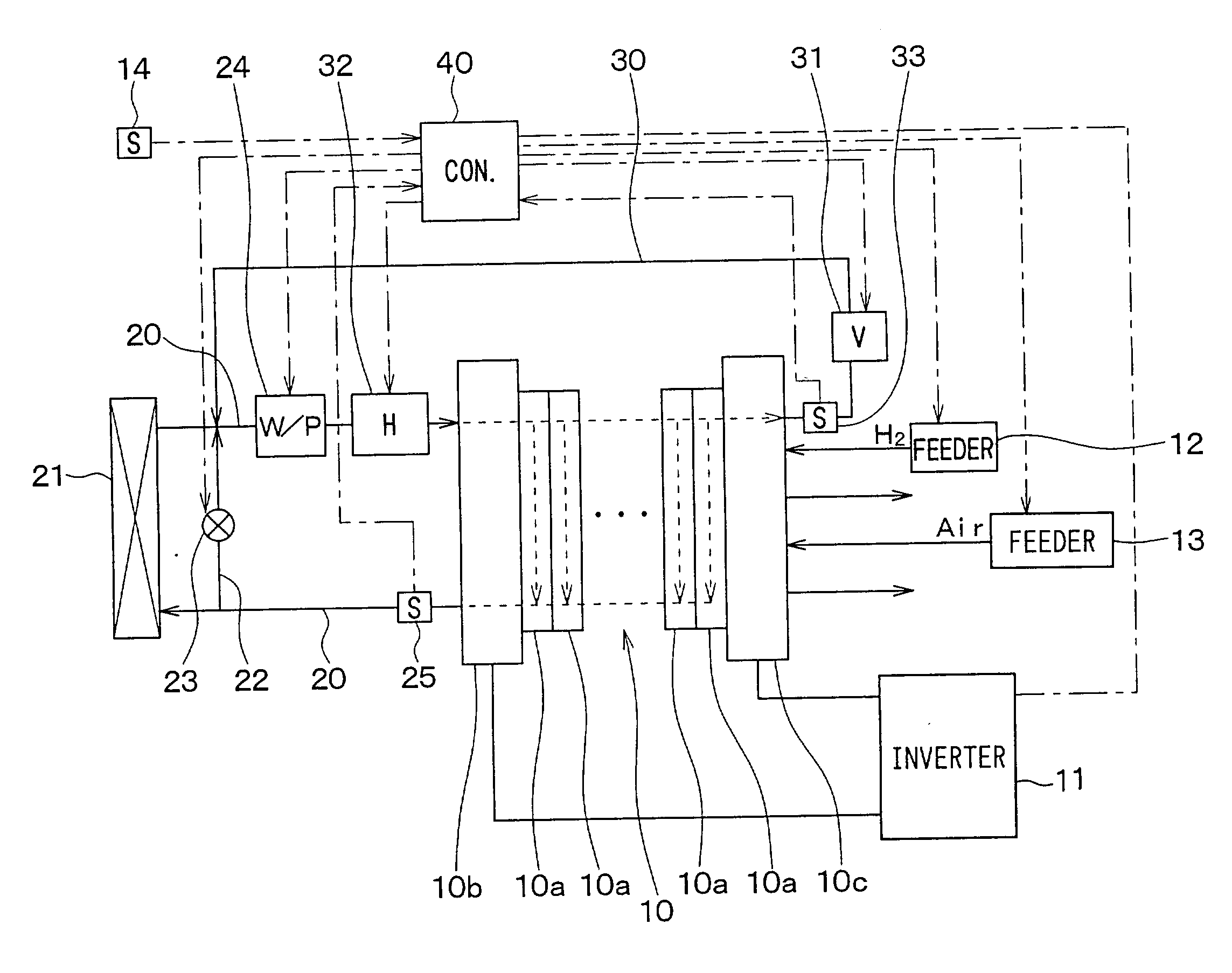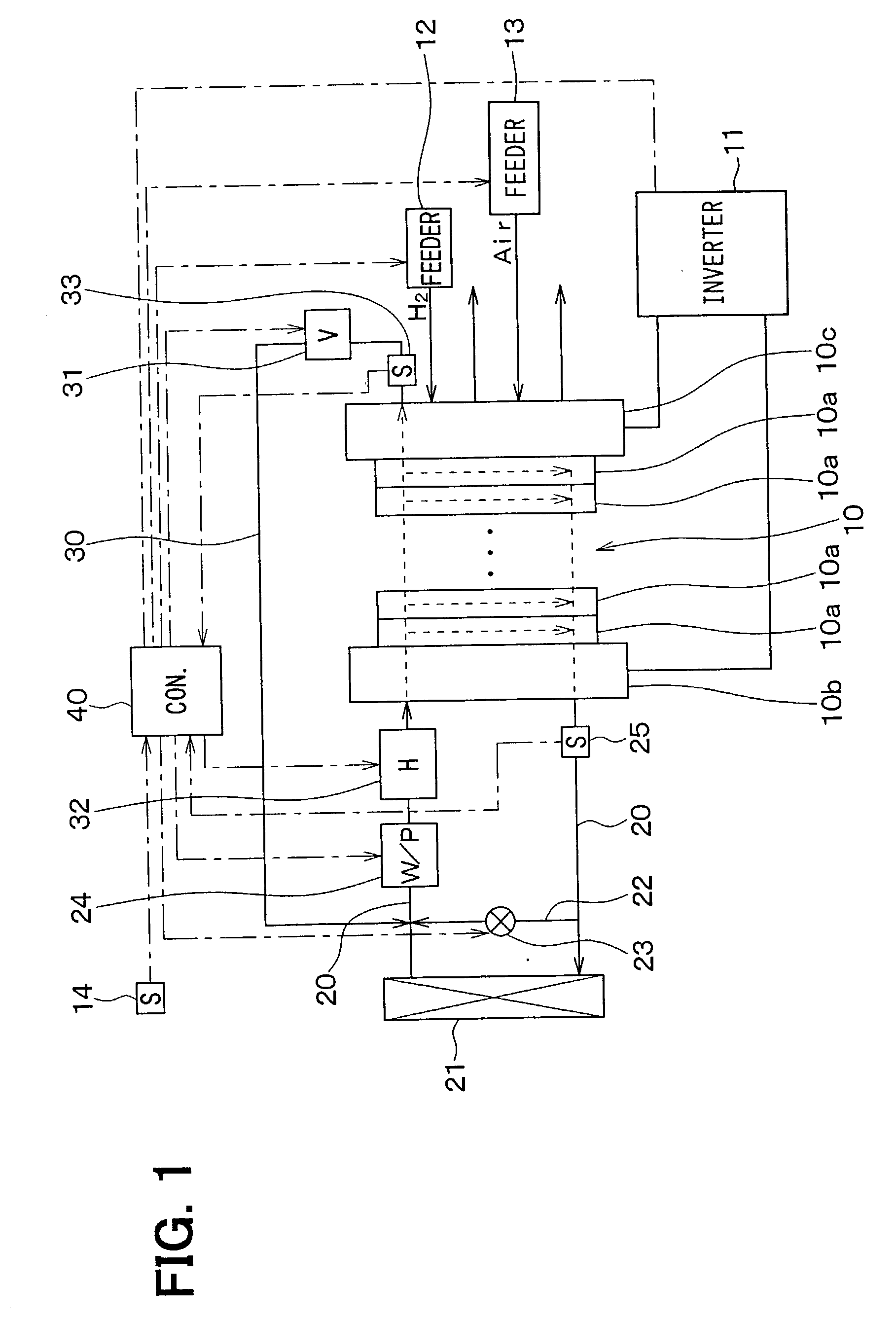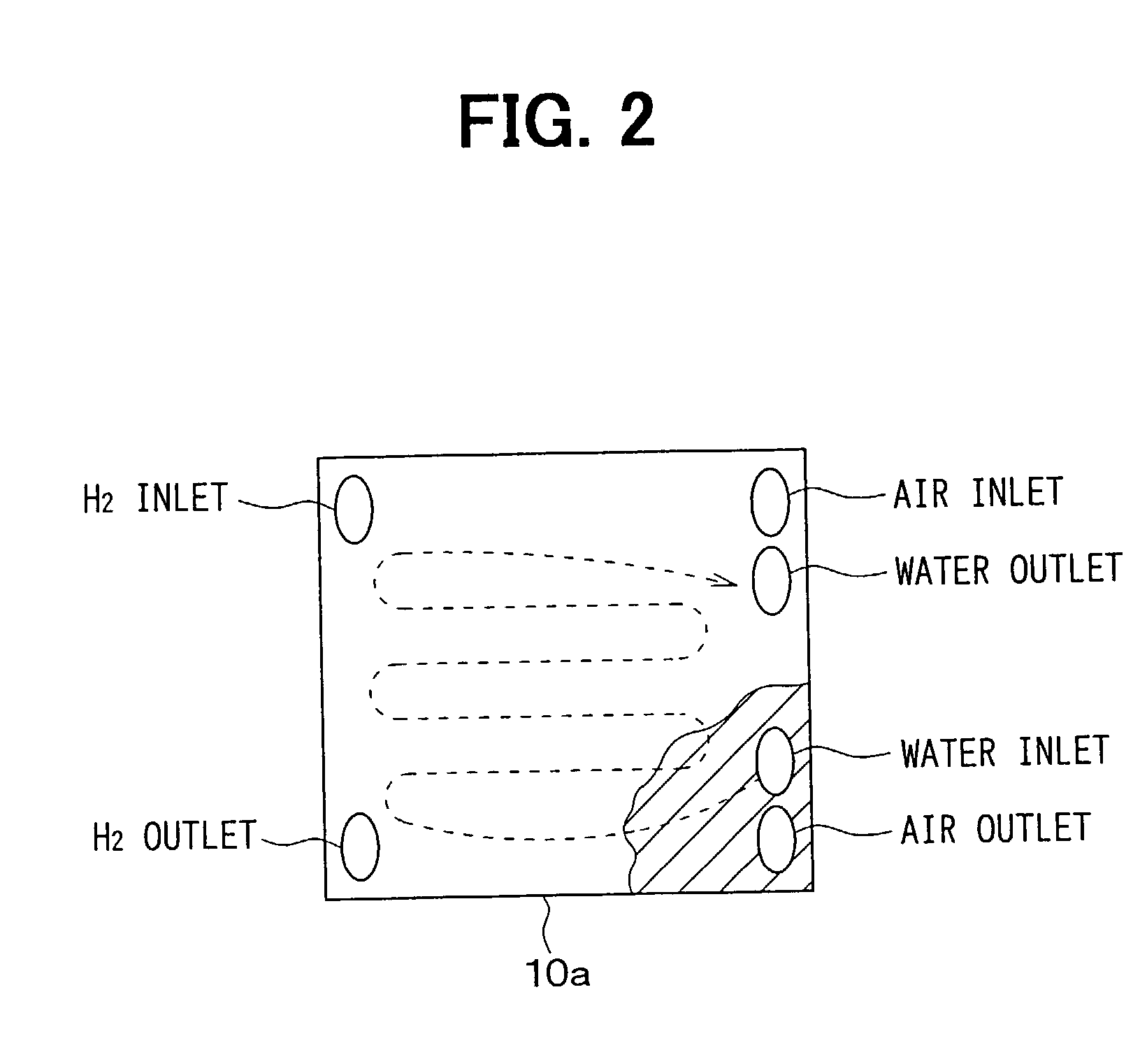Fuel cell system
- Summary
- Abstract
- Description
- Claims
- Application Information
AI Technical Summary
Benefits of technology
Problems solved by technology
Method used
Image
Examples
first embodiment
[0055] (First Embodiment)
[0056] In the first embodiment, a fuel cell system of the present invention is typically used for an electric vehicle (fuel-cell vehicle) driven by a fuel cell as a power source. As shown in FIG. 1, the fuel cell system according to the first embodiment includes a fuel cell 10, a hydrogen feeder 12, an air feeder 13, a heating-cooling system 20-33, a controller 40 and the like. The fuel cell (FC stack) 10 generates electric power using an electrochemical reaction between hydrogen and oxygen. Here, the hydrogen and the oxygen are used as a fuel gas in the fuel cell 10. In the first embodiment, a solid-polymer electrolyte fuel cell is used as the fuel cell 10, and the fuel cell 10 is constructed by plural cells 10a each of which is used as a unit cell. Each cell 10a is constructed by an electrolyte film sandwiched between a pair of electrodes. Hydrogen and air (oxygen) are supplied to the fuel cell 10. In the fuel cell 10, the following electrochemical reactio...
second embodiment
[0079] (Second Embodiment)
[0080] In the second embodiment, a thermal-medium switching device for switching a flow direction of the thermal medium (cooling water) is added to the fuel cell system in the first embodiment. The thermal-medium switching device switches a flow direction of cooling water circulated into the fuel cell 10 during the partial warm-up operation. In the second embodiment, the same portions as the above-described first embodiment are indicated by the same reference numerals, respectively, and description thereof is omitted.
[0081] As shown in FIG. 4, in the second embodiment, a sub-bypass path 34 is provided to connect the cooling-water circulation path 20 (thermal-medium circulation path) and the bypass path 30. Further, flow switching valves 35, 36 are provided at a connection point between the cooling-water circulation path 20 and the sub-bypass path 34, and at a connection point between the bypass path 30 and the sub-bypass path 34. Two flow passages crossing ...
third embodiment
[0086] (Third Embodiment)
[0087] In the above-described second embodiment of the present invention, the thermal-medium switching device for switching the flow direction of the thermal medium (cooling water) is constructed by the flow-path switching valves 35, 36 and the sub-bypass path 34. However, in the third embodiment, a thermal-medium circulation device capable of switching a flow direction of the thermal medium is used as the thermal-medium switching device. Further, in the third embodiment, the same portions as the above-described embodiments are indicated by the same reference numerals, and description thereof is omitted.
[0088] As shown in FIG. 6, a water pump 24a capable of switching a flow direction of cooling water is provided. The water pump 24a is constructed so that the water inlet side and the water outlet side of the fuel cell 10 can be alternately switched.
[0089] When the fuel-cell partial temperature Tfc becomes equal to or higher than a predetermined temperature, o...
PUM
 Login to View More
Login to View More Abstract
Description
Claims
Application Information
 Login to View More
Login to View More - R&D
- Intellectual Property
- Life Sciences
- Materials
- Tech Scout
- Unparalleled Data Quality
- Higher Quality Content
- 60% Fewer Hallucinations
Browse by: Latest US Patents, China's latest patents, Technical Efficacy Thesaurus, Application Domain, Technology Topic, Popular Technical Reports.
© 2025 PatSnap. All rights reserved.Legal|Privacy policy|Modern Slavery Act Transparency Statement|Sitemap|About US| Contact US: help@patsnap.com



